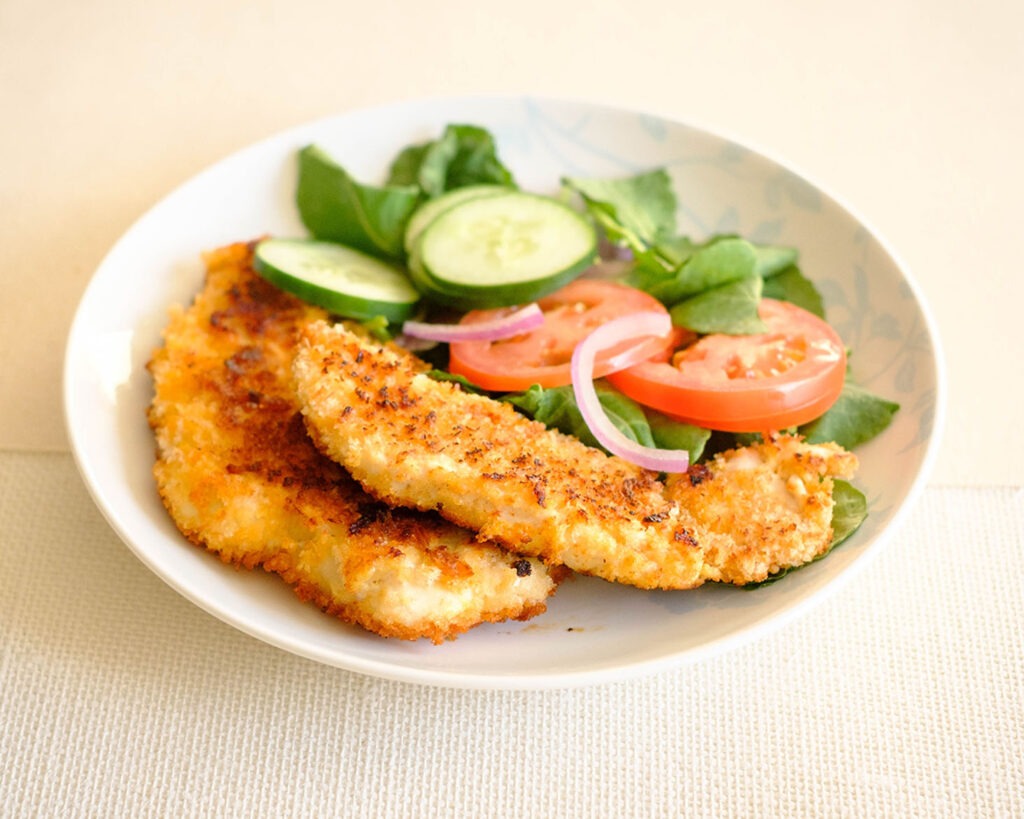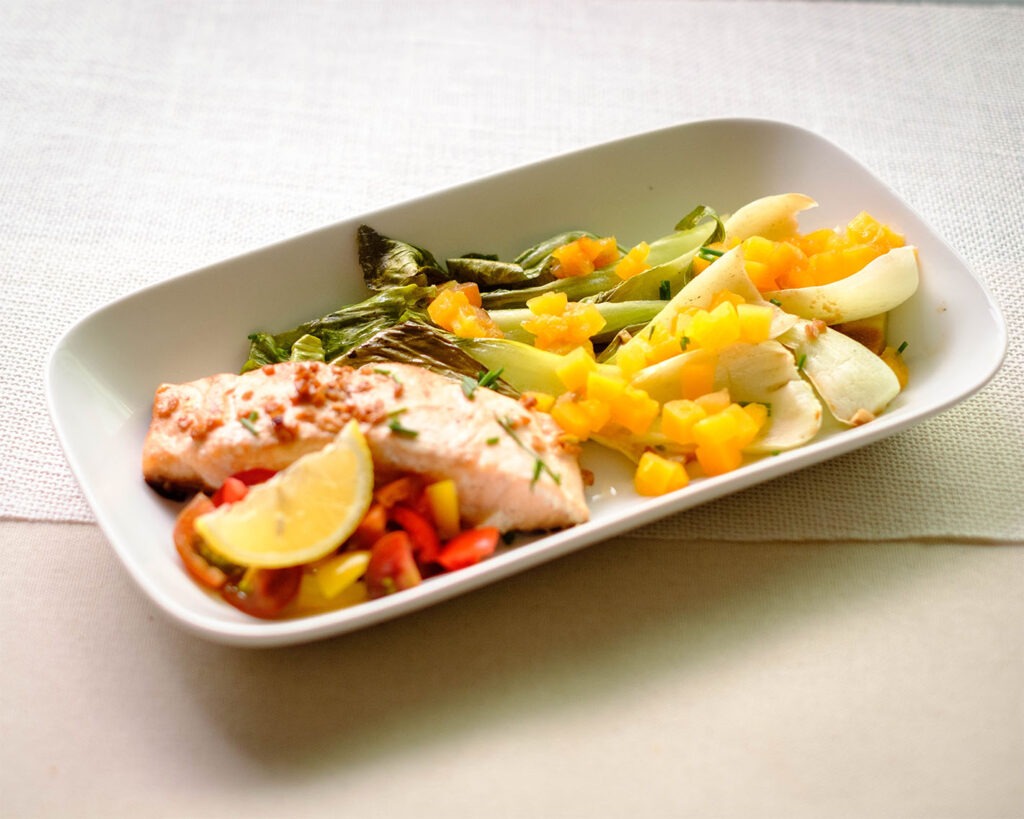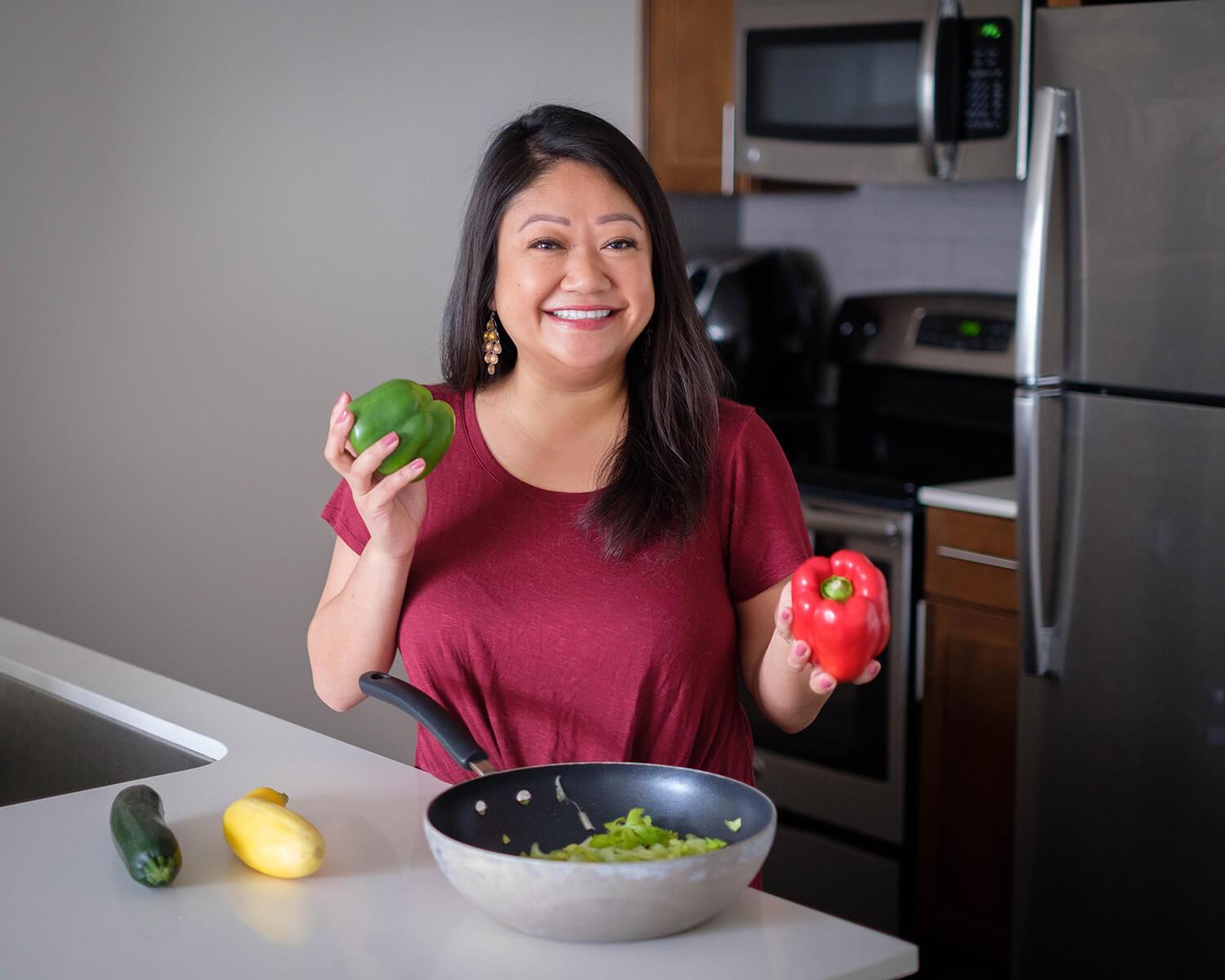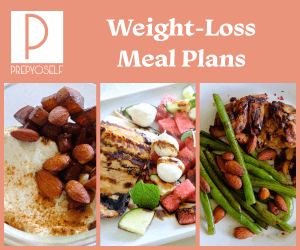Low calorie meal prep is one of the biggest reasons people start meal prepping. Gradually lowering your calorie intake is a great way to lose weight and can leave you feeling more alert throughout the day. Ditch the heavy lunches and focus on light foods with delicate and deep flavors.
Low calorie meal prep isn’t for everyone and you should consult a registered dietitian if you’re concerned about your health or have existing health issues.
We’ve covered all kinds of meal prep dieting options: from Keto to vegetarian, and sometimes, it takes a while to find the right one for you, or perhaps being on one diet for a while and then shifting to a new one is the best way for you. No matter your diet of choice, do your research and pay attention to your body. A lot of lifestyle details, body type, health needs, and goals go into determining a safe level of calories for you specifically.
Low calorie meal prep does not mean eating as little calories in a day as you possibly can. Depriving yourself of calories is not a healthy way to lose weight. This can lead to many more significant health issues. For low calorie meal prep, you want to aim for a calorie deficit within a safe range. This is based on your baseline weight and maintenance calories. Maintenance calories is the amount of calories that you need to maintain your current weight. If you’re looking to lose weight, you’ll want to be just under your maintenance level. Going too far below will make the diet more difficult to sustain and won’t last long. Find a comfortable calorie amount that you can reasonably handle. Remember, your body needs calories for energy and to function properly!
There are a lot of methods to feel full while lowering your calories. This way you don’t feel like you’re cutting out so much and leaving yourself lethargic through the day. A feeling of tiredness may be expected at first but if you find it to continue being an issue you’re probably not consuming enough calories. Again, pay attention to your body and adjust as you need.
How to know how many calories you need?
This depends on your calorie burn. If you live a mostly sedentary lifestyle, working at a desk all day with little to no exercise this is likely the category you fall into. Moderate activity is a 1.5 – 3 miles a day walk or equivalent activity. This means light workouts that don’t get the heart rate too much above resting. While active lifestyles are anything above moderate. 3 plus miles a day or workouts that get the heart rate elevated for a decent length of time.
Next, you need to understand your own metabolism. Everyone’s body is different and burns calories differently. Without the help of a registered dietitian you may find it difficult to understand your metabolism without trial and error so if you’re looking to make quick improvements you should seek professional advice. If you’re moderately healthy but looking to lose a few pounds and are otherwise fairly healthy, you can more easily estimate it and make adjustments as needed.
Low Calorie Meal Prep Methods for Success
1. Set Realistic Goals
Achieving goals, even small ones, make you feel good and provides the opportunity to grow into more ambitious goals. However, failing to achieve goals is discouraging for most people. Give yourself the best chance at success and set goals you can realistically achieve and gauge your own level of commitment.
- Use an online calculator to estimate your daily caloric needs based on your age, gender, weight, height, and activity level.
- Aim for a modest calorie deficit to lose weight safely. Typically, a deficit of 500-750 calories per day can lead to a healthy weight loss of about 1-1.5 pounds per week.
Set Specific, Measurable Goals:
- Define clear goals such as “lose 10 pounds in 2 months” or “reduce daily intake to 1,500 calories.”
- Track your progress regularly to stay motivated and make adjustments as needed.
2. Educate Yourself About Nutrition
Understand Macronutrients:
- Learn about the role of proteins, carbohydrates, and fats in your diet. Each macronutrient has a different caloric value (protein and carbs provide 4 calories per gram, fats provide 9 calories per gram).
- Balance your diet to include all macronutrients while staying within your calorie limit.
Read Labels:
- Pay attention to nutritional labels on packaged foods. Look for serving sizes, calorie counts, and ingredients.
- Avoid foods with high sugar, sodium, and unhealthy fats.
3. Plan Your Meals
Create a Weekly Menu or use our weekly meal plan:
- Plan your meals and snacks for the week. Focus on incorporating a variety of foods to meet your nutritional needs and keep your diet interesting.
- Include lean proteins (chicken, fish, tofu), whole grains (quinoa, brown rice), plenty of vegetables, and healthy fats (avocado, nuts).
4. Portion Control
Use Measuring Tools:
- Invest in a kitchen scale and measuring cups to accurately portion your food.
- Pay attention to serving sizes and measure portions to avoid overeating.
This can be tedious but if you’re struggling to lose weight this can be very helpful for understanding your daily pacing. If you’re not the kind of person to stick with measuring tools, figure out some quick amounts on foods you like and try just sticking to those. A cup of air popped popcorn there is about 30-40 calories while butter popcorn is around 80 calories. Now you know quickly how much popcorn you can have as a snack and the calorie count.
5. Healthy Cooking Methods
Opt for Low-Calorie Cooking Techniques:
- Grill, bake, steam, or roast foods instead of frying.
- Use non-stick pans or cooking sprays to reduce the need for added fats.
- Enhance the taste of your meals with herbs, spices, lemon juice, and vinegar instead of high-calorie sauces and dressings.
6. Choose Low-Calorie Snacks
- Opt for snacks like fresh fruits, vegetables with hummus, Greek yogurt, or a handful of nuts.
- Avoid high-calorie, sugary snacks and beverages.
Pre-Portion Snacks:
- Divide snacks into individual portions to avoid overeating. Don’t take the entire bag of chips to the couch with you. Put some chips in a bowl or baggie and you’re less likely to just continue eating out of habit or boredom.
7. Stay Hydrated
- Aim for at least 8 glasses of water a day. Sometimes thirst can be mistaken for hunger.
- Avoid sugary drinks and limit alcohol consumption.
- Drink herbal teas, black coffee, or infused water for a calorie-free flavor boost. There are tons of zero calorie water flavorings on the market so if you just can’t handle that much water or find it difficult to cut out sweet drinks, this is a great alternative.
8. Low calorie doesn’t mean no activity
Exercise regularly to burn calories and improve weight loss, get the blood pumping, and get some fresh air.
- Find ways to stay active throughout the day, such as taking the stairs, walking during breaks, or doing household chores.
9. Track Your Progress
Keep track of the foods you’re eating. It can be a lot of work but for some people it’s necessary to stay on track and it can be a great thing to hold onto as a reminder as you achieve your health goals.
- Keep a food diary to log what you eat and drink each day. This helps you stay accountable and identify areas for improvement.
- Use apps like MyFitnessPal or Lose It! to track your caloric intake easily.
Regular Check-Ins:
- Weigh yourself weekly or monthly and take body measurements to monitor your progress. Don’t be discouraged by slow progress at first. This is normal in new diets and is often down to your metabolism catching up to the new foods or simply water weight as you increase your hydration.
- Adjust your calorie intake and exercise routine based on your results.
Low Calorie Meal Prep Ideas
breakfast:
- Greek yogurt with berries and a drizzle of honey
- Overnight oats with almond milk, chia seeds, and sliced bananas
Lunch:
- Quinoa salad with mixed greens, cherry tomatoes, cucumbers, and a light vinaigrette
- Grilled chicken breast with steamed broccoli and sweet potato mash
Dinner:
- Baked salmon with a side of asparagus and brown rice
- Turkey chili with black beans, corn, and bell peppers
Snacks:
- Carrot and celery sticks with hummus
- Apple slices with a small handful of almonds
Recommended Average Daily Calorie
| Gender at Birth | Age | Sedentary | Moderately Active | Active |
| Female | 14-18 | 1,800 | 2,000 | 2,400 |
| 19-30 | 1,800-2,000 | 2,000-2,200 | 2,400 | |
| 31-50 | 1,800 | 2,000 | 2,200 | |
| Male | 14-18 | 2,000-2,400 | 2,400-2,800 | 3,000 |
| 19-30 | 2,400-2,600 | 2,600-2,800 | 2,800-3,000 | |
| 31-50 | 2,200-2,400 | 2,400-2,600 | 2,400-2,800 |
If you’re looking to bulk up and build muscle, then consuming above average calories can be necessary and that’s coming in a future post!




